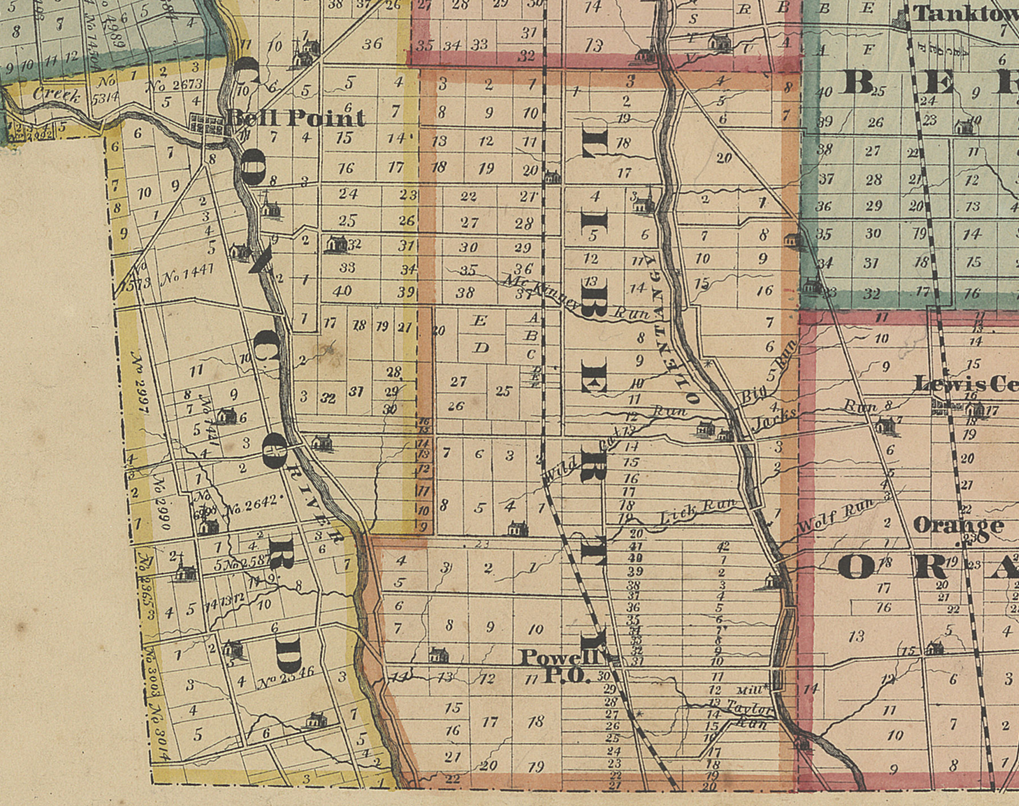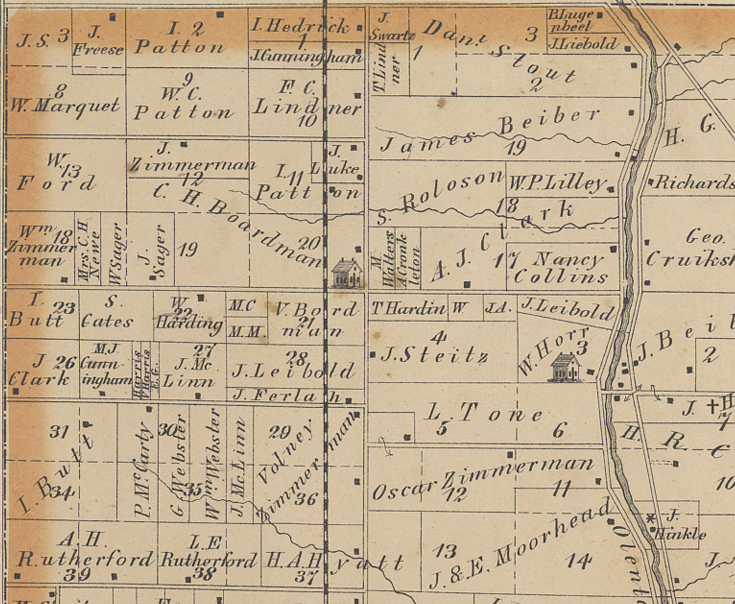The Mystery Man:
Who Was Henry Adams Hyatt?
November 18, 2024: Research is still ongoing… PB
The deeper that I got into researching this article, the more curious I became in recognition of the absence of the mention of or any details about the Hyattsville founder and his immediate family.
1860 Area Map… Very few roads and dozens, rather than hundred’s of rural residents
When Did Mr. Hyatt Arrive in Delaware County & From Where?
My “Ancestry.com” research provided me with multiple factoids:
His parents apparently were long time resides of the Zanesville area of Muskingum County, about xx miles east of our neighborhood.
Indications are that Hyatt found his way a few dozen miles west to Knox County where he apparently met his first wife, xxxx, and married her in 1847 at the age of xx. Records indicate that she died in 1949.
The 1850 Census indicates that he continued moving west, at age xx, being a farm laborer in Morrow County.
The 1860 Census indicates that he had moved to Delaware and lived with his younger brother Joeseph’s family, while working as a store clerk in his brother’s store.
Henry registered for the Civil War draft in xx, but I was unable to locate any record that either he or his brother Jospeh served in the war.
Insert map showing movement between Zanesville to DELCO
For Context, What was Delaware County Like Around That time?
I found an Atlas online via the Cincinnati Libraries that was revealing and reminded me of “Western” movies and the stark scenes of “settlers’ life”:
The first paved or log plank '“turnpikes”…
The first railroads coincidently reached both Delaware and Columbus in 1851. (The west and east Ohio canals connecting Lake Erie to the Ohio River were being built and used between 18xx and 18xx.)
Delaware County’s first non-native settlers arrived in Liberty County in 1802 and by 1812, the early descendants of CAH neighbor Kim Cellars arrived from Pennsylvania to claim their allotment of military lands.
The Village of Delaware’s population was listed as being xxx in 1860 and xx by 1880. (2020 Census: xx for the City of Delaware and xx for the County.)
While there were horse and wagon/buggy trails along the rivers, in between, there were only mud roads carved out of the forest and thus allegedly having tree stump remnants impeding travel.
The 1860 drawings attached (click for larger versions) show that slowly, new township roads, likely of horse drawn wagon worn - had begun to emerge. (Today’s Hyatts Road starts at today’s Liberty Road (McKinney Run in Lot 37) and extends westward to today’s Section Line Road. Note that nearby Butts Road linked to a bridge across the river (long before the river was converted to a reservoir).
The Chambers and Willis farms apparently were on today’s Liberty Road, just south of Hyatts Road. After searching land ownership records for the period around 1860, I am guessing that the possibly mis-labeled “S. C. Patten” farm was at the SW corner of Liberty Road and Bunty Station Road, north of the other two farms (“Hendrick” on the accompanying map).
PLACEHOLDER: For Context, What was Delaware County Like Around That time?
I found an Atlas online via the Cincinnati Libraries that was revealing and reminded me of “Western” movies and the stark scenes of “settlers’ life”:
The first paved or log plank '“turnpikes”…
The first railroads…
Delaware County’s first non-native settlers arrived in Liberty County in 1802 and by 1812, the early descendants of CAH neighbor Kim Cellars arrived from Pennsylvania to claim their allotment of military lands.
The Village of Delaware’s population was listed as being xxx in 1870 and xx by 1880.
While there were horse and wagon/buggy trails along the rivers, in between, there were only mud roads carved out of the forest and thus having tree stump remnants impeding travel.






